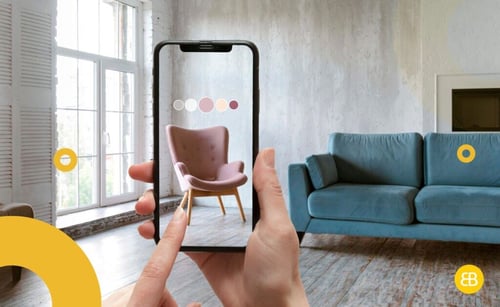Table of Contents
Nowadays, the truth is that almost every click opens the door to over 26 million eCommerce stores, each fiercely competing for our attention.
Oftentimes, the key to your success as an online business in the retail industry lies within your eCommerce website itself — your virtual storefront, the window through which your brand engages, captivates, and converts.
Crafting eCommerce websites that seamlessly blend aesthetics, functionality, and user-centric design can be a game-changer for your company, enabling you to stand out from your competitors. And there are so many!
In this article, we look at data-driven and user-centric eCommerce website design, uncovering the essence of what transforms an ordinary online store into one of the best eCommerce websites, enabling you to start selling online effortlessly.
Why is eCommerce Web Design Different?
Regarding eCommerce web design, it’s not just about creating visually appealing websites. The unique challenges and opportunities of online shopping require a specialised approach to design that goes beyond aesthetics.
For example, an eCommerce store most often prioritises sales, conversions, and profits. The website’s purpose is clear: selling products. Regular websites, on the other hand, focus on generating leads and traffic (e.g., portfolio websites, blogs, etc.), leading to distinct design approaches.
What To Consider When Designing eCommerce Websites?
Designing an effective eCommerce website involves carefully balancing user experience, aesthetics, and functionality. Each aspect plays a crucial role in attracting customers, keeping them engaged, and driving conversions.
Pro tip: Keep in mind that most eCommerce website builders limit customisation and personalisation. To overcome this challenge, it’s better to look for reliable developers and designers who can help you create a unique and compelling user experience that aligns with your business goals.
Mobile-First: The Emphasis on Mobile User Experience
About 85% of people own and use smartphones as of 2023. What does this mean? Creating a mobile-friendly design is no longer optional — it’s a must. As a significant part of online shoppers uses their mobile devices, we need to emphasise the need for seamless experiences across different devices.
It adapts content for various screens, as seen in popular eCommerce website design examples (e.g., Amazon or Walmart) ensuring accessibility, engagement, and higher conversions. In fact, a mobile-first approach prioritises designing for smaller screens, enhancing site performance, and providing a smooth experience on smartphones.

Design Trends: Boosting Conversion Rates Through Visual Content
Design trends can make or break the user experience and often significantly impact conversion rates. By staying updated on design elements that resonate with your target audience, you can create a visually captivating and highly converting online store.
Less Is More: Embracing Minimalism in eCommerce Design
Simplicity speaks volumes in eCommerce. For instance, a minimalist design reduces clutter, guides users’ focus, and enhances the perceived value of products or services.
Influencing Buying Decisions Through Visual Cues
Colours and patterns may evoke emotions and influence buying decisions. Strategic use of colour psychology can guide users toward desired actions and create a cohesive brand experience.
Storytelling Layouts: Crafting Compelling Narratives with Design
Your eCommerce website should also tell a story. Thoughtfully crafted layouts that guide users through a narrative can create a deeper connection between customers and your brand and drive repeat purchases.

Micro-interactions: Small Details, Big Impact on User Engagement
As Dan Saffer explains, micro-interactions are subtle animations and feedback that enrich user interactions. They create a sense of responsiveness, encourage engagement, and build user confidence. If you want to successfully sell online, these elements help you communicate attention to detail and enhance overall user satisfaction.
This way, you can guide users through the shopping journey and highlight key information for a better browsing experience. Moreover, micro-interactions provide users with real-time feedback, reducing uncertainty and assuring them that their actions are producing the desired outcome (e.g., progress indicator bars while adding shipping and billing information during checkout).

Nurturing Deeper Connections Through Personalisation
Personalisation goes beyond addressing users by name. Tailoring product recommendations and experiences based on user behaviour creates meaningful connections and drives sales.
Beyond “Dear Customer”: Tailoring User Journeys with Personal Touches
Customising the user journey helps you foster a sense of individuality. Addressing users’ preferences and needs enhances engagement and loyalty long-term.
AI-Powered Recommendations: Serving What Users Crave Before They Know It
Artificial Intelligence analyses user data to predict preferences and suggest products, streamlining the shopping process and increasing conversions.
Data Privacy and Personalisation: Striking the Right Balance
While personalisation offers benefits, respecting user privacy is paramount. Striking a balance between tailored experiences and data protection builds trust and compliance.
Accessibility: Opening Doors to All Users
Web Content Accessibility Guidelines (WCAG) ensure equal access for users with impairments. Prioritising accessibility creates an inclusive shopping experience for all.
Make sure you build a user interface that accommodates various abilities, ensuring usability and enjoyment for a diverse customer base.
For example, voice-activated assistants and other assistive technologies can transform online shopping for many individuals, making the process more intuitive and accessible.

AR and VR Integration: Immersive Shopping Experiences of Tomorrow
Augmented Reality (AR) and Virtual Reality (VR) redefine online shopping by enabling interactive product visualisation. As a result, you can reduce returns and reverse logistics costs, which consisted of a staggering $101 billion in 2020 alone.
For example, VR storefronts provide a lifelike shopping environment where users can navigate digital aisles and explore products as if in a physical store. Furthermore, AR technology empowers customers to visualise products in their real-world surroundings, minimising uncertainty and enhancing confidence in online purchases.
Frequently Asked Questions
What are the benefits of working with a development team for my eCommerce business?
Even when selecting the best eCommerce website builder for your online business, you have limited personalisation and customisation options. On the other hand, a great eCommerce website design built by a top-tier web development agency enhances user engagement and boosts profitability.
How much does eCommerce web development cost?
What key factors should I consider when building an eCommerce app alongside my website?
Bottom Line: Building a Successful eCommerce Site
In the dynamic world of eCommerce, professional and user-centric web design can help most online stores drive conversions and establish a strong brand presence that stands out.
By embracing mobile-friendly design, keeping up with design trends, and leveraging elements like micro-interactions and personalisation, eCommerce businesses can create an accessible, and immersive shopping experience that resonates with consumers and gives them a competitive edge.
Lastly, as technologies like Artificial Intelligence and AR continue to transform the online shopping landscape, the future holds exciting possibilities for eCommerce web design.
Learn how EB Pearls can help you build an eCommerce website that meets your expectations and get in touch with our team today!

Gorakh excels in leadership and web development, driving excellence. Always ready for new challenges, he fosters growth for himself and his team.
Read more Articles by this Author
